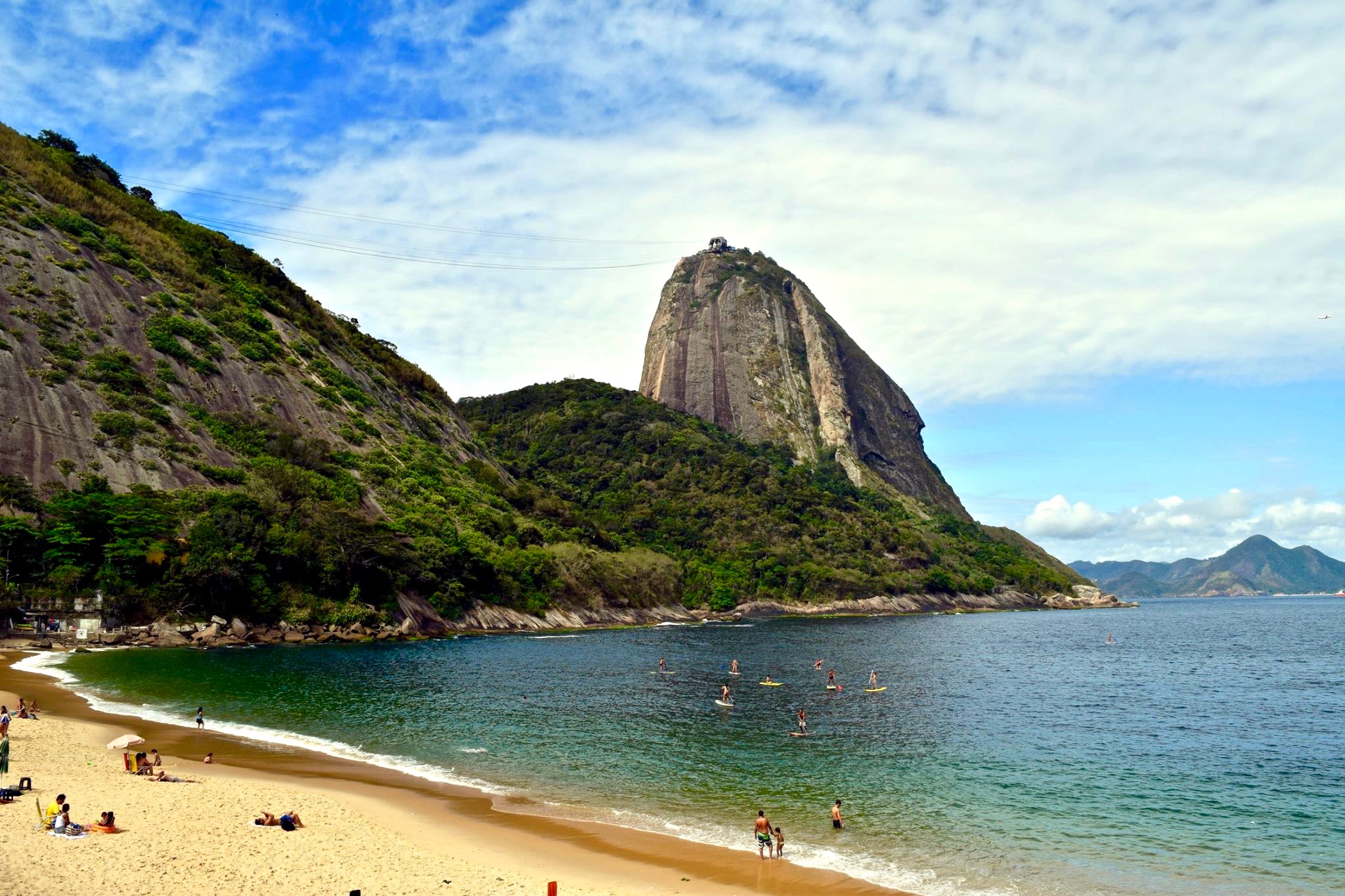Colonia del Sacramento, Uruguay: day trip from Buenos Aires
A couple of hours by ferry from Buenos Aires, just across the Rio de la Plata, Colonia del Sacramento will make you travel back in time. A Unesco World Heritage Site since 1995, Colonia's Historic Quarter is one of the best preserved colonial architectonic ensembles in South America.
If you're spending a few days in Buenos Aires and would like to cross over to Uruguay for a one day trip, Colonia is your best choice!
How to get to Colonia del Sacramento
During my 3-day trip to Buenos Aires, its proximity to Uruguay was too tempting not to visit this intriguing country during the free day that I had.
Old car in Colonia del Sacramento
Even though my first choice was Montevideo, the Uruguayan capital, I soon realised that a one day trip wouldn't give me enough time to enjoy this great city. First of all, the last ferry of the day back to Buenos Aires departs only 4h after the first one arrives, which is clearly not enough time. Moreover, the express ferry costs over €200, way too much money for just one day.
Considering this, Colonia was the wisest option as a one day trip to Uruguay. The city was much closer to Buenos Aires, and also its size makes it a lot easier to explore in just one day. I definitely didn't regret my choice!
The easiest way to get to Colonia from Buenos Aires is by ferry. Located just on the other bank of the Rio de la Plata, it only takes a couple of hours to get there. There's a couple different ferry companies that you can choose from:
Buquebus: leaving from Puerto Madero, this is the most popular company crossing to Uruguay. The fastest crossing takes about 1h15m, and they also offer a slow service that takes three hours (not worth it, as it also includes a bus ride and the difference in price is minimal). If you have more time and prefer to go all the way to Montevideo, this company will also take you there in about 3h with their express service.
Colonia Express: this company also offers a fast ferry option to Colonia, leaving from Terminal Internacional de Cruceros, on Avenida Inmigrantes.
Buquebus ferry
My hotel was located less than 5 minutes walking from Puerto Madero, so I booked my tickets with Buquebus, mainly because of the convenient departure point. Prices with both companies are very similar (especially when booking in advance), so if you're staying closer to the Cruceros ferry terminal, I've also heard that Colonia Express is a very reliable company.
Ticket price can vary depending on how much in advance you book your tickets, the travel dates, and even departure time, so always check the site for the most up-to-date rates. They also have different prices depending if you buy it from the Argentinian or Uruguayan site, so always compare both of them! I chose the Uruguayan site because the conversion rate was much better, and ended up saving almost €10.
Once you have your ticket, all you need to do is print it, show up in the ferry terminal 40 minutes in advance to check in and go through immigration, and off you go to discover a new country for the day!
Things to do in Colonia del Sacramento
Get lost in the Historic Quarter
Founded by Portuguese settlers in 1680, Colonia del Sacramento has one of the best preserved colonial ensembles that you can find in South America. The old pebble streets are the perfect reflection of the Portuguese and Spanish traditions fused together. After all, this small town belonged to both the Portuguese and Spanish Empire before Uruguay gained independence in 1828.
When you visit Colonia, you'll probably spend most of your time in the historic quarter. There's nothing better than wandering around the narrow streets and enjoying the tranquility of this unique place!
Old car in a restaurant
Cross the City Gate
The best way to access Colonia's historic quarter is through Puerta de Campo, the old city gate of Colonia's citadel.
Built in 1745 by the Portuguese government, this used to be the main entrance to Colonia, surrounded by a military fort and thick walls to protect the city from pirates. Today, it marks the division between the new town and the historic quarter.
As you walk over the drawbridge, you'll feel like travelling back in time!
City gate
Walk along San Miguel Bastion
After crossing the city gate, you will reach San Miguel Bastion to your left. It used to be part of the old city wall that protected Colonia del Sacramento back in the colonial times.
Part of this fortified construction still stands today, including the old cannons that were once shot to put off the invaders.
If you walk along the wall, you'll be able to enjoy the beautiful views of Rio de la Plata and Colonia. If you're a photography lover, you'll get some very good shot opportunities!
San Miguel Bastion
Learn the stories behind Calle de los Suspiros
Calle de los Suspiros is probably the most famous and photographed street in Colonia. Meaning 'street of sights' in Spanish, there's different stories about how it got this name.
One of them says that when prisoners were convicted to death, they were brought to this street and tied up until they were drowned by the high tide. Some other stories claim that brothels in Colonia used to be located in this street, and the local sailors would sigh for the love of the beautiful ladies.
Stories aside, Calle de los Suspiros is definitely one of the most picturesque streets that you'll find in Colonia. Constructed in a typical Portuguese style, it still preservers its original pavement. The old Portuguese and Spanish houses flanking the street have been converted into beautiful craft shops, so don't forget to take a peak inside!
Calle de los Suspiros
Street sign
View from the top
Climb to the top of the Lighthouse
Colonia's lighthouse is located in a privileged location overlooking Rio de la Plata. Constructed back in 1857, it has witnessed some of the cruelest battles between the Portuguese and Spanish Empires.
The original construction was built over the ruins of St. Francis Convent. With 26 meters in height, its light can reach over 7.8 nautical miles.
The lighthouse is today open to the public, so if you'd like to enjoy a panoramic view of Colonia del Sacramento, don't miss this opportunity. You can even spot the skyscrapers of Buenos Aires on the other side of the river!
Lighthouse
View of the lighthouse in the historical quarter
Mar de la Plata behind the lighthouse
Have lunch at the Main Square
The Main Square, officially Plaza 25 de Mayo is the heart of Colonia's historic quarter.
In its origins, the main square used to be an old market where local merchants would sell food, everyday objects and even slaves. Today, it is a relaxing, quiet square where you can enjoy some of the best food in town.
On the northern side of the square, you will find multiple options for lunch, all of them serving homemade Uruguayan food. Don't forget to try the steak, the specialty of the area! I tried a traditional Uruguayan steak with honey sauce and it was honestly one of the most delicious main courses that I've had in a very long time!
Main Square
Visit one of Colonia's many Museums
If there's something that Colonia is not lacking of in spite of its small size is museums.
One of the main ones is the Municipal Museum, holding an exhibition of the social life back in the colonial period, displaying original items and documents from the colonial times.
The Portuguese Museum is located in an original Portuguese construction from the first half of the 18th century. Inside you can enjoy military uniforms, as well as a very interesting collection of English arms that were once used by the Portuguese army.
The Spanish Museum exhibits multiple historical items belonging to the Spanish regiment that used to inhabit the town a few centuries ago.
But probably Colonia's most famous museum is the Tile Museum. Also held in a typical Portuguese construction, here you can enjoy a beautiful collection of French, Catalan and some of the first Uruguayan tiles. The building still preservers the original walls and floors, well worth a visit!
Tile Museum



